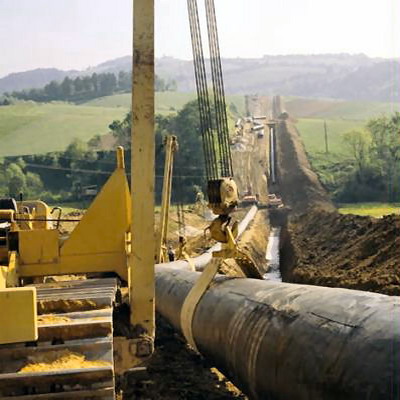
NABUCCO GAS PIPELINE PROJECT IS BACK ON TRACK
Publication: Eurasia Daily Monitor Volume: 4 Issue: 173
By:

All players involved in the Nabucco gas pipeline project got their act together at a conference on September 14-15 in Budapest. The European Union demonstrated for the first time a hands-on commitment to the project. The Hungarian government announced its re-commitment after a year’s wavering. Azerbaijan’s Energy and Industry Minister, Natig Aliyev, confirmed his country’s willingness to help kick-start Nabucco’s first phase from the Shah-Deniz gas field’s first phase of production, pending solutions to Central Asian gas supplies for the pipeline’s second phase.
The European Union’s Energy Commissioner, Andris Piebalgs, termed Nabucco “an embodiment of the existence of a common European energy policy” in his speech at the conference. He announced the appointment of Jozias van Aartsen, former minister of foreign affairs of the Netherlands, as EU coordinator of the Nabucco project, with a four-year mandate. The EU had included Nabucco among the four top-priority energy projects already last year, but the Commission took a long time before filling the coordinators’ posts.
The proposed pipeline would originate in eastern Turkey and run for 3,300 kilometers via Bulgaria, Romania, and Hungary to Austria, with a projected capacity of 30-35 billion cubic meters of gas annually. The consortium includes Turkey’s pipeline company Botas, Bulgaria’s pipeline operator Bulgargaz, Romania’s Romgaz, Hungary’s MOL, and Austria’s OMV as project leader. The initial feasibility study, funded by the EU and completed in 2004, awaits updating. The cost of building the pipeline is currently estimated at €5 billion.
The consortium seeks a sixth participant company in Western Europe. At the Budapest conference, top executives of Germany’s RWE and of Gaz de France announced the respective companies’ willingness to seriously consider joining the consortium. RWE, a major energy conglomerate in northwestern Germany, also announced its availability to invest up to €1 billion in Caspian upstream operations. Gaz de France — which is now merging with the other French champion, Suez, into GDF-Suez, to be 35% state-owned — had earlier begun negotiations to join the Nabucco and confirmed its interest at this conference.
French President Nicolas Sarkozy, on a visit to Hungary that coincided with the Nabucco conference, encouraged GDF to support the Nabucco project. Sarkozy, who is the son of a Hungarian post-war refugee to France, addressed the Hungarian parliament to underscore his support for a common EU policy on energy and, specifically, for the Nabucco project to reduce dependence on Russian gas.
Hungarian government leaders did their best to dispel the year-old perception that they would go for Gazprom’s Blue Stream-Two pipeline project, which is Nabucco’s rival. Prime Minister Ferenc Gyurcsany and Economics Minister Janos Koka (Socialist and Free Democrat, respectively) delivered keynote addresses re-committing the government to Nabucco. The prime minister pledged “Hungary’s total support,” as “it would be dumb for a country or a region to feel content with a single supplier.” In an accompanying statement, Koka admitted, “We were mistaken in repeating too often that the [Nabucco] project was just a dream, and so we actually contributed to the project’s remaining a dream.” Left almost unsaid was the opposition Fidesz party’s consistent political support for Nabucco, leading ultimately to the formation of a cross-party consensus in favor of the project.
The project’s financial picture looks encouraging, on the whole. The consortium expects to cover 70% of the construction costs through bank loans, primarily from the European Investment Bank, which clearly shows interest in the project. The consortium is also in discussions with the European Bank for Reconstruction and Development and other institutions. Some of the consortium’s companies or governments are reluctant to contribute to the remaining 30% portion of the construction costs.
The consortium, Nabucco Gas Pipeline International, hopes to reach decisions in the coming months with regard to choosing the sixth participant company, preparing the inter-governmental agreements, front-end engineering for the pipeline’s construction, and its first-phase financing. The consortium’s managing director, Reinhard Mitschek, presented a rather ambitious calendar for these steps, expecting to construction work to begin in 2009. In that case, the first gas should flow through the pipeline in 2012.
Azerbaijan is waiting to be approached with specific, binding contracts on a take-or-pay basis for gas supplies to the Nabucco pipeline’s first phase. But this can only be a stopgap solution, if the pipeline is to be used at the projected capacity — that is, if the project looks commercially viable in order to line up the investment funds. That issue in turn hinges on opening direct access to Central Asian gas or Iranian gas, assuming a major U.S. and EU engagement to resolve the political issues involved.
(Hungarian and international media coverage, September 14-18)




